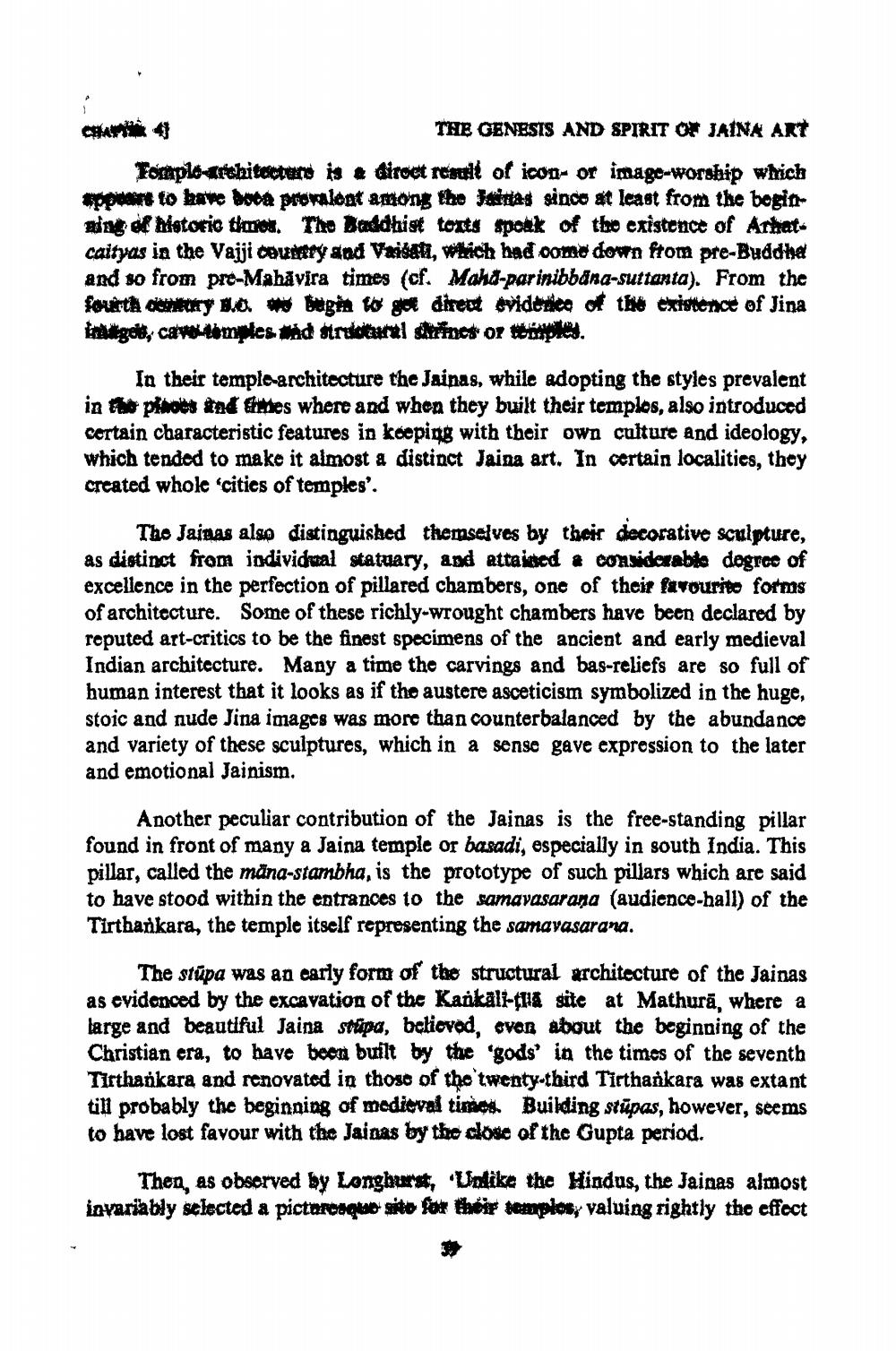________________
THE GENESTS AND SPIRIT OF JAINA AKT Tomaplo-architecture is a diroet remull of icon- or image-worship which pour to have boca provalent among the duas sinco at least from the begittning of Historie there. The Buddhist touts spouk of the existence of Arhatcaityas in the Vajji curry and Vaišati, wtrich had come down from pre-Buddha and so from pre-Mahavira times (cf. Mahd-parinibbana-suttanta). From the fourth y B.O. tugen tot de direct evidence of the existence of Jina Image, cave temples d structural dries or tiples
In their templo-architecture the Jainas, while adopting the styles prevalent in the photo and Shines where and when they built their templos, also introduced certain characteristic features in keeping with their own culture and ideology, which tended to make it almost a distinct Jaina art. In certain localities, they created whole "citics of temples'.
The Jainas also distinguished theraselves by their decorative sculpture, as distinct from individual statuary, and attaided & considerable degree of excellence in the perfection of pillared chambers, one of their favourite forms of architecture. Some of these richly-wrought chambers have been declared by reputed art-critics to be the finest specimens of the ancient and early medieval Indian architecture. Many a time the carvings and bas-reliefs are so full of human interest that it looks as if the austere asceticism symbolized in the huge, stoic and nude Jina images was more than counterbalanced by the abundance and variety of these sculptures, which in a sense gave expression to the later and emotional Jainism.
Another peculiar contribution of the Jainas is the free-standing pillar found in front of many a Jaina temple or basadi, especially in south India. This pillar, called the mana-stambha, is the prototype of such pillars which are said to have stood within the entrances to the samavasarana (audience-hall) of the Tirthankara, the temple itself representing the samavasarana.
The stūpa was an early form of the structural architecture of the Jainas as evidenced by the excavation of the Kankali-da site at Mathurā, where a large and beautiful Jaina sttipa, beticvod, Vor about the beginning of the
stian era, to have been built by the 'gods' in the times of the seventh Tirthankara and renovated in those of the twenty-third Tirthankara was extant till probably the beginning of medieval times Building stūpas, however, seems to have lost favour with the Jainas by the close of the Gupta period.
Then, as observed by Longhurst, Unlike the Hindus, the Jainas almost invariably selected a picturesque sito fate their teamplos, valuing rightly the effect




